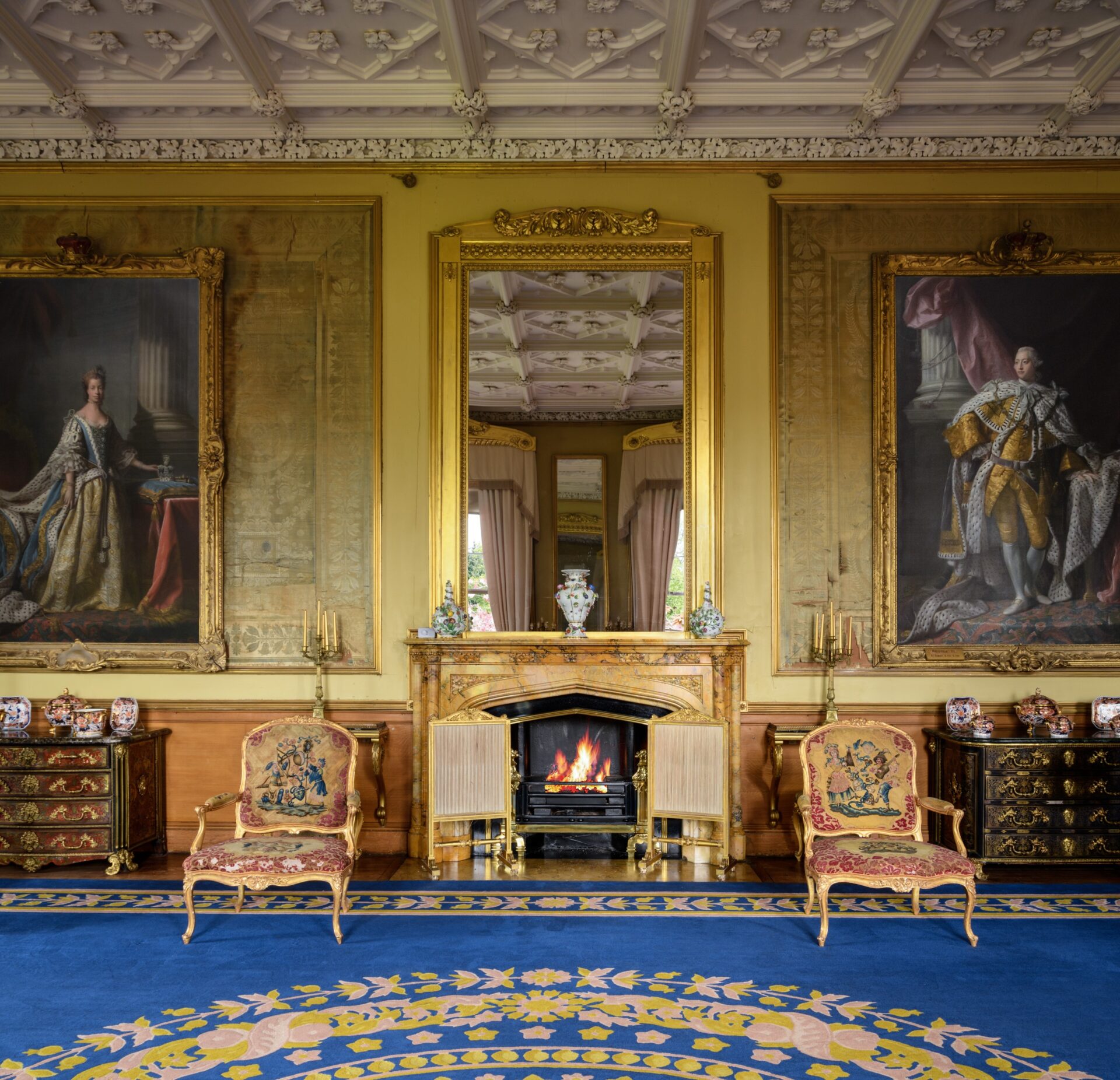The name Drawing Room takes its meaning from the verb ‘to withdraw’. After dinner, the gentlemen would remain in the Dining Room to drink whisky, port and liqueurs, and the ladies would withdraw into this more comfortable room. Although still the most opulent apartment in the palace, this room does bear the scars of history. Amidst World War II, the house was used as a school for girls. During this time, a fire started and the silk brocade wall covering became exposed to heavy water damage. However, the pattern and loom still exist in Lyon, France. Had you been a guest at the palace before the fire, you would have been shown into a room devoid of paintings, as the rich blue silk was far too beautiful to cover with artwork.
Although he never lived in the redesigned palace, this room represents the distinguished political life of the 2nd Earl of Mansfield. His diplomatic career saw him elevated to the role of Ambassador in France. He was a regular visitor to the court of King Louis XVI, and it is believed that he taught the French king how to dance Scottish reels.
The courtly feel of this room owes much to the 18th century furniture and paintings, some of which adorned the 2nd Earl’s embassy. Most notable are the two coronation portraits of King George III and Queen Charlotte which once hung in his French Embassy. These commanding canvases were painted by Scottish artist Allan Ramsay and his studio. In the far corner of the room is a fragment of Queen Charlotte’s apron. Embroidered with coloured silk and chenille threads, it is reputed to have been given to a member of the family by the queen herself.
On each side of the doorway hang the more modern portraits of the 7th Earl and Countess of Mansfield, grandparents of the present Earl. The whimsical image of Dorothea Carnegie was painted in 1927 by Philip de László, who later painted the 7th Earl in 1930.
As you look down the length of the room, you will see another pair of portraits. The man looking kindly upon you and dressed in an abundant red gown is William Murray, 1st Earl of Mansfield, painted by Sir Joshua Reynolds in 1776. This remarkable man bought the Earldom to the family. He left Scone Palace when he was 13 years old to attend Westminster School in London. He was a studious boy who worked hard and eventually rose up through the legal rankings to become the Lord Chief Justice of England. He was a compassionate man, fighting for the rights of minorities. But there is one case for which he is most remembered, the case of Somerset v Stewart 1772. This highly publicised and groundbreaking case set in motion one of the biggest changes in British history. It was for his services to British law that he was given the earldom in 1776. So influential were his 32 years as the Lord Chief Justice that many practices in modern law today were introduced and instituted by him. If you would like to know more about the Somerset v Stewart case, or any of the other renowned cases the 1st Earl presided over, please ask the guide in your room.
Hanging alongside the 1st Earl is his wife Elizabeth, painted by Scottish artist David Martin. This portrait captures the Countess in the Library at Kenwood House, which still stands on the edge of Hampstead Heath in London. The couple, who never had children of their own, raised their two great-nieces at Kenwood House, one of whom was a mixed-race girl. You will see an enchanting portrait of these girls in a later room.
The most modern painting in the palace sits on an easel in the corner of the room. Painted by Carlos Sancha in 1994, it captures the late Earl of Mansfield (8th), his son the present Earl (9th) and his grandson, Viscount Stormont, as a boy.
Placed along the room is a set of Louis XV Giltwood Fauteuils. Part of a twelve-piece suite, each chair has a moulded frame carved with flowers and foliage, and has St Cyr needlework upholstery with Bérainesque figures and animals on the arm pads and serpentine seats. Also of note in this room are three early 19th century Ormolu-Mounted Boulle Side Tables; one in première-partie and two in contre-partie. Each table has a Sienna marble top, with friezes, legs and stretchers inlaid with brass scrolls. They are attributed to Philippe Francois Julliot. Also on display in this room is a pair of Kang H’si period vases (1662-1722). The colour is known as sang de boeuf, or ox blood. Elaborately mounted in Louis XV Ormolu to form ewers, they were originally part of the French Royal collection.
The somewhat unassuming table in front of the large window at the far end of the room is inlaid with 141 pieces of marble. It was sent from Italy for the 3rd Earl to choose the marble for the fireplaces around the palace. it is supported by a beautiful pedestal of Scottish granite.
